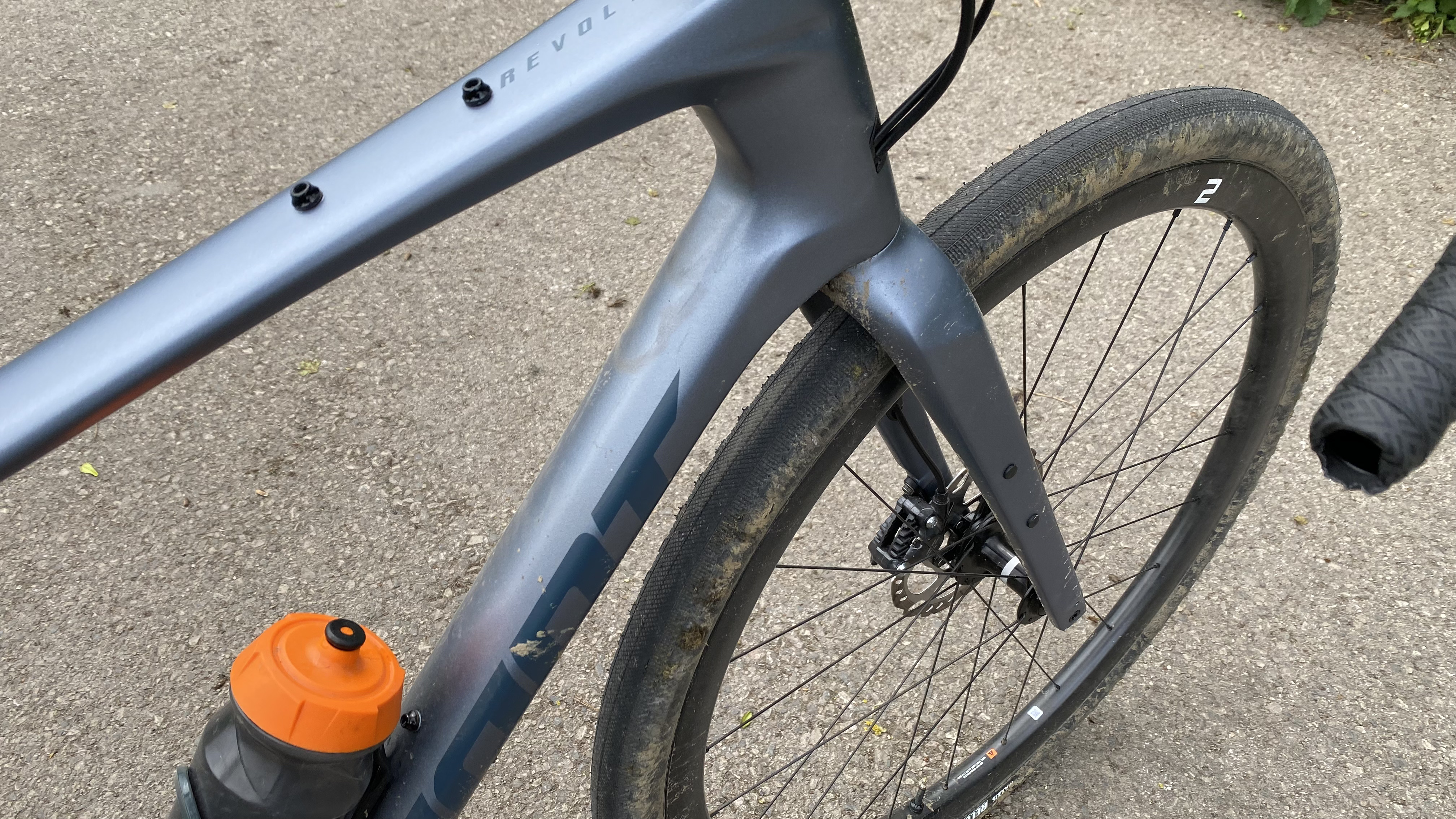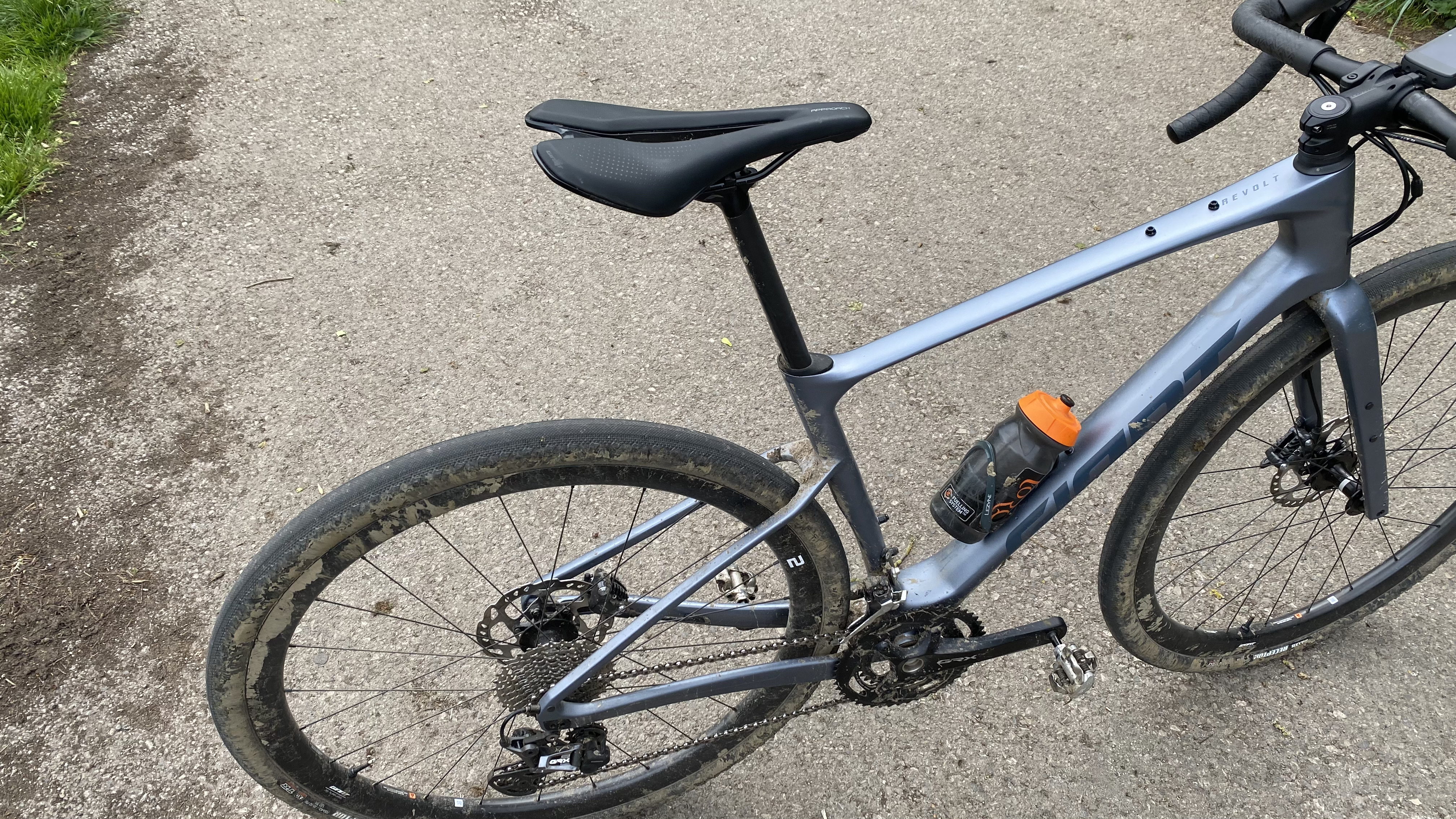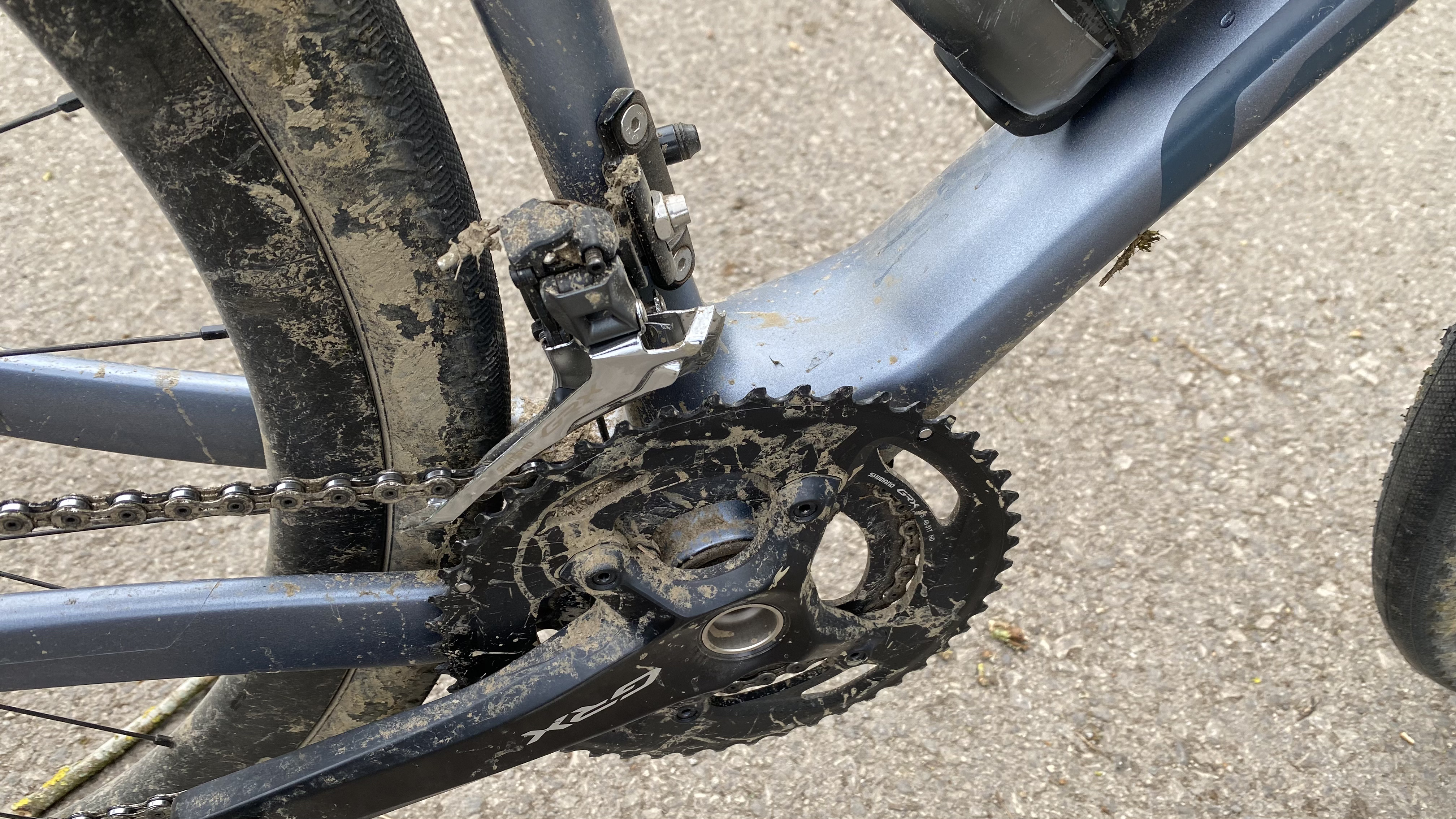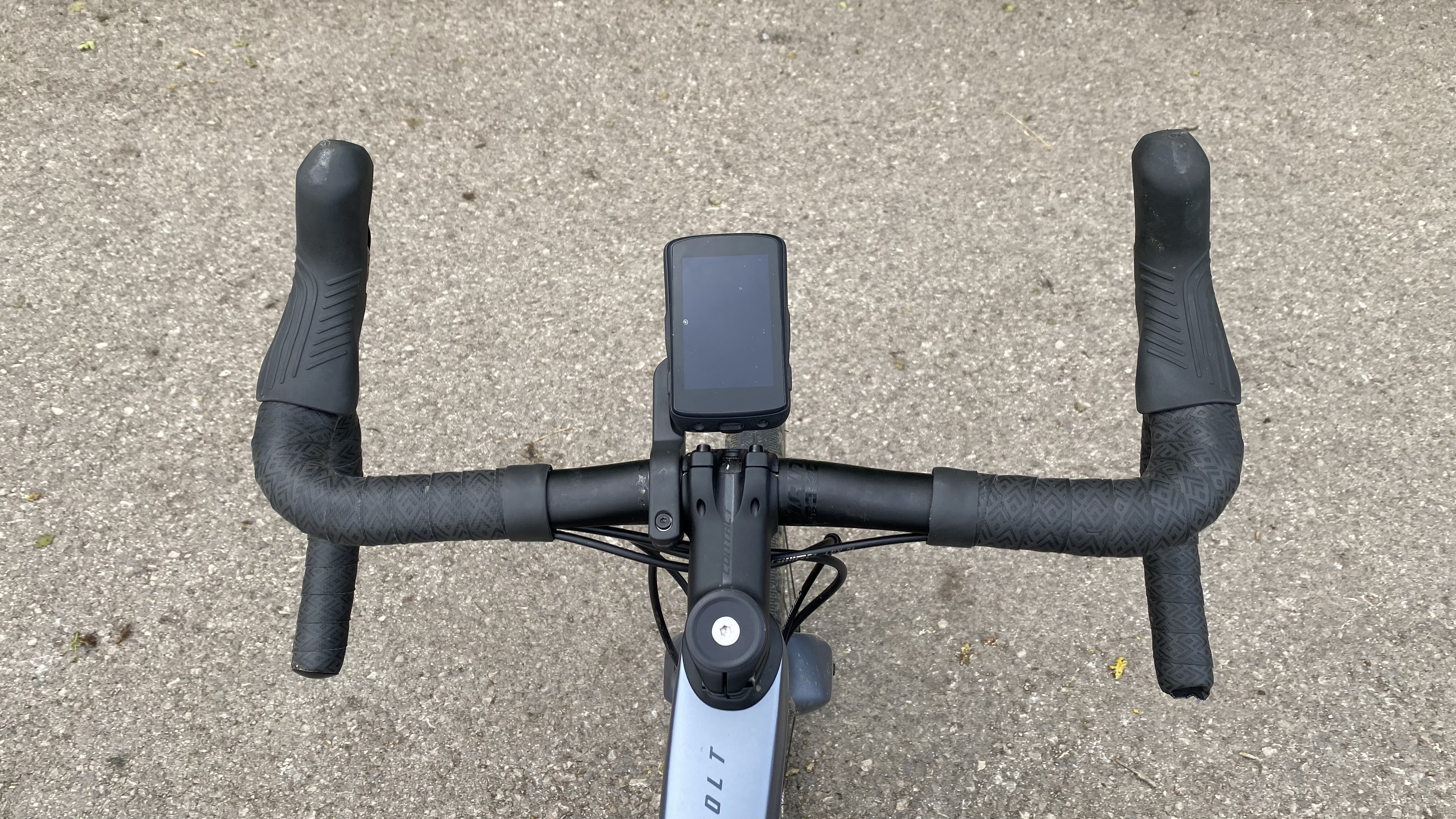Bike Perfect Verdict
Giant’s new Revolt soft-roader is super smooth, super versatile and quietly quick with suitably rugged looks and, seeing how well that vibe sells on cars, it should be massively popular. The vague, road style steering and muted feel won’t suit everyone though and the slick tires are seriously treacherous.
Pros
- +
Super-smooth frame, post and bars
- +
Light and quietly super-quick frame and wheels
- +
Loads of bottle, rack, fender and bag mounts
- +
53mm tire clearance
- +
Close spaced gears and powerful brakes
Cons
- -
Receptor tires are terrifying without adding speed
- -
Stock steering is borderline sketchy off-road
- -
No single ring options on any Revolt
Why trust BikePerfect
Giant’s Revolt gravel rig already has a reputation as one of the best gravel bikes thanks to its ‘like a road bike but off-road’ vibe. The latest version is lighter, more versatile, more practical and even faster than before too. However the contrast between ride and handling won’t suit everyone and the stock tires are terrifying.
For information on Bike Perfect's testing procedures and how our scoring system works, see our how we test page.

Design
The new Revolt frame looks very similar to the previous incarnation and also shares a lot with Giant’s Defy endurance road bike, including the Overdrive 1.25in lower headset bearing system and Powercore 86mm wide press fit BB. The wishbone seat stay yoke and top of the seat stays themselves are flatter though. The dropouts are now eccentric chips that give either a 435mm or 425mm effective chain stay length. This expands maximum tire clearance to 53mm which matches the new wider crown fork. The fork also gets two bolt bottle/cargo cage mounts on each leg joining one on top of and one under the down tube, plus a seat tube mount and a ‘gas tank’ mount on the top tube.

There’s a special adaptor at the seat post for mounting a rack and you get hidden fender points front and rear too so it’ll make a great daily driver. The seat tube is now a round 30.9mm bore so you can run a round rigid post or a dropper post. It’s sold with Giant’s signature soft ride D-Fuse post and a spacer to fill the gap with an adapter. Despite this increased versatility and tire space the new frame and fork are 160g lighter (on a medium bike). That’s mostly thanks to refinement of the one-piece molded main triangle and Giant’s unique in-house raw carbon fiber to finished frame construction process.
Interestingly while most brands are creating slacker, more stable gravel bikes, the new Revolt geometry compensates for the effect of the fatter tires. That includes a steeper head angle to compensate for the increased steering trail and stability of the bigger rubber and a dropped bottom bracket to offset the increased ride height. Longer reach is also balanced by an increase in stack height and shorter stems so you’re effectively in the same position.

Specifications
Giant has also bucked the trend for single ring drivetrains by sticking with Shimano’s 2x11 GRX 800 gearing and matching brakes with 160mm rotors. The rest of the bike is then almost entirely Giant’s own home brand kit. That includes the Contact D-Fuse back swept compact bar in 42, 44 or 46mm widths depending on frame size and a 60, 70, 80 or 90mm stem. You get Giant’s CXR 2 Carbon Disc wheels with a fat bodied, 25mm internal rim and DT Swiss derived hub internals. The Maxxis Receptor tires are set up tubeless from the factory which is a real bonus and really do measure 40mm as stated. The essentially slick tread design with occasional, super-shallow, halfway down the sidewall tread lugs is terrifying treacherous though.

Performance
I need to discuss the tire issues straightaway as they has a massive impact on being able to appreciate the rest of the Revolt Advanced. Even in bone dry conditions the rear tire will lock up immediately you apply any significant brake pressure. It’ll also spin very easily if you apply sudden pedal pressure and the front is never far from sliding if even remotely provoked with the brakes or bars. While sliding into gates, trees, and bushes that you’d normally stop well before has a certain comedy value (especially for other riders), the Receptors are seriously dangerous on loose or slippery descents and turns. To add insult to imminent injury, despite the slick tread and harder compound center rubber, they don’t even roll faster than far more capable off-road tires. That’s not just an anecdotal observation either as I roll tested them against WTB Nano, Schwalbe G One R, Panaracer Gravel King and Continental Terra Trail and while I haven’t ever pinned down whether it’s carcass or compound at the root cause, I’ve always found Maxxis road/gravel tires slower than most.
Dirt confidence isn’t helped by the fact that the steering is still in the realms of road bikes, not off-road bikes, so it’s easy for the front wheel to tuck under. The back swept bar also acts in the same way as shortening the stem which makes the front end even twitchier. That meant I spent a lot of time on singletrack or even slightly meandering Sustrans ex-railway paths hanging off the bike at weird angles in a state of panic somewhere between imminent under-steer wipe out or being too scared to tip at all and running wide into the undergrowth. Things unsurprisingly improve with a grippier front tire and obviously on road that faster steering feels more natural and incisive when it comes to initiating turns. Even with the massive head tube the Revolt feels a little flexy and vague through the front end if you’re pushing on. That vagueness is what ultimately gets you the vibration quelling gains though and things get more settled with a longer stem so it’s not hard to sort out.
The fast steering is really at odds with a ride that’s otherwise smooth enough to act as a sedative on rough sections of path. There’s obviously still some chatter and thump on stuff like cobbles or tractor tread buzz ruts (it’s a gravel bike not an MTB), but the flattened and thinned frame sections and the D-Fuse bar and stem definitely do most of the damping work. The backward curve of the bar top gives a comfortably relaxed wrist position similar to Coefficient's Wave bars too. However it will put your GPS at a slight angle which will drive some people nuts.

The smoothness of the Revolt also takes away most of the spark and pop sensation you might expect from a lightweight slick tired bike. Pushing through the muffled vibe and applying some power the Revolt lifts and skims superbly. While the quietness might mask just how quick you’re going, the amount of Strava PRs I picked up during testing (including some top two and three times on road sections) show the Revolt is undeniably, if understatedly rapid.
To be fair the tires help here too as they’re very light at just over 400g which definitely helps acceleration. The 120tpi carcass is also really supple and pliable, to the point where I regularly thought I had a puncture even at 35psi. The CXR 2 wheels are light at a claimed 1520g too, but again they seem more set up for road rather than more rugged gravel use as the high volume, 35mm deep rims are relatively stiff compared to some Zipp Firecrests I swapped over to check against. They definitely help the Revolt hold onto higher speeds more easily, they look great and the DT Swiss guts should last really well.
The 2x11 gearing gives more mid-range ratio options and smaller gaps between gears which is undoubtedly a good thing on flat or gradually rolling terrain and extended tap out tempo climbs. If your idea of gravel is more ‘chasing round the woods and local singletrack 90s MTB style’ then grinding between chainrings and the multiple shifts required to notice any difference will definitely feel equally old-school compared to a wide range single ring setup. The front mech adds clutter and noise to an otherwise really clean looking bike too, but Giant resolutely sticks with twin ring setups across all seven Revolt models, even on the SRAM equipped bikes.
Verdict
Gravel bikes are inevitably a compromise between road and off-road performance and the Revolt spans an even wider spectrum of uses than most. In stock form it’s essentially a super-smooth fat tire road bike, with fast handling, closely spaced gears, quiet, supple, slick tires and enough bottle mount points to embarrass a camel. That smoothness and potentially big tire clearances are a real bonus off-road and when you give it the spurs it can get a proper sustained, Strava PR harvesting gallop on. The stock tires are a massive limiter off-road and not the gift you'd expect on road either. I think a complete shut out of single-ring options is a shame on an otherwise extremely versatile bike too.
Tech Specs: Giant Revolt Advanced 0
- Discipline: Road/gravel
- Price: $4200 / £3499 / AU$5,200 (frame only option also available)
- Head angle: 71.5 degrees
- Frame material: Advanced Composite
- Size: Medium
- Weight: 8.74kg
- Wheel size: 700c
- Drivetrain: Shimano GRX RX-810 2 x 11 gears with 11/34T cassette
- Cranks: Shimano GRX RX810 48/31T chainset
- Brakes: Shimano GRX RX810 brakes with 160mm Centerlock rotors
- Cockpit: Giant Contact XR D-Fuse 440mm alloy bar and 70mm stem
- Wheelset: Giant CXR 2 Carbon Disc WheelSystem wheels
- Tires: Maxxis Receptor, 700x40c tires
- Seatpost: Giant D-Fuse composite seatpost
- Saddle: Giant Approach saddle

Guy Kesteven has been working on Bike Perfect since its launch in 2019. He started writing and testing for bike mags in 1996. Since then he’s written several million words about several thousand test bikes and a ridiculous amount of riding gear. He’s also penned a handful of bike-related books and he reviews MTBs over on YouTube.
Current rides: Cervelo ZFS-5, Specialized Chisel, custom Nicolai enduro tandem, Landescape/Swallow custom gravel tandem
Height: 180cm
Weight: 69kg
- Guy KestevenTechnical-Editor-at-Large

